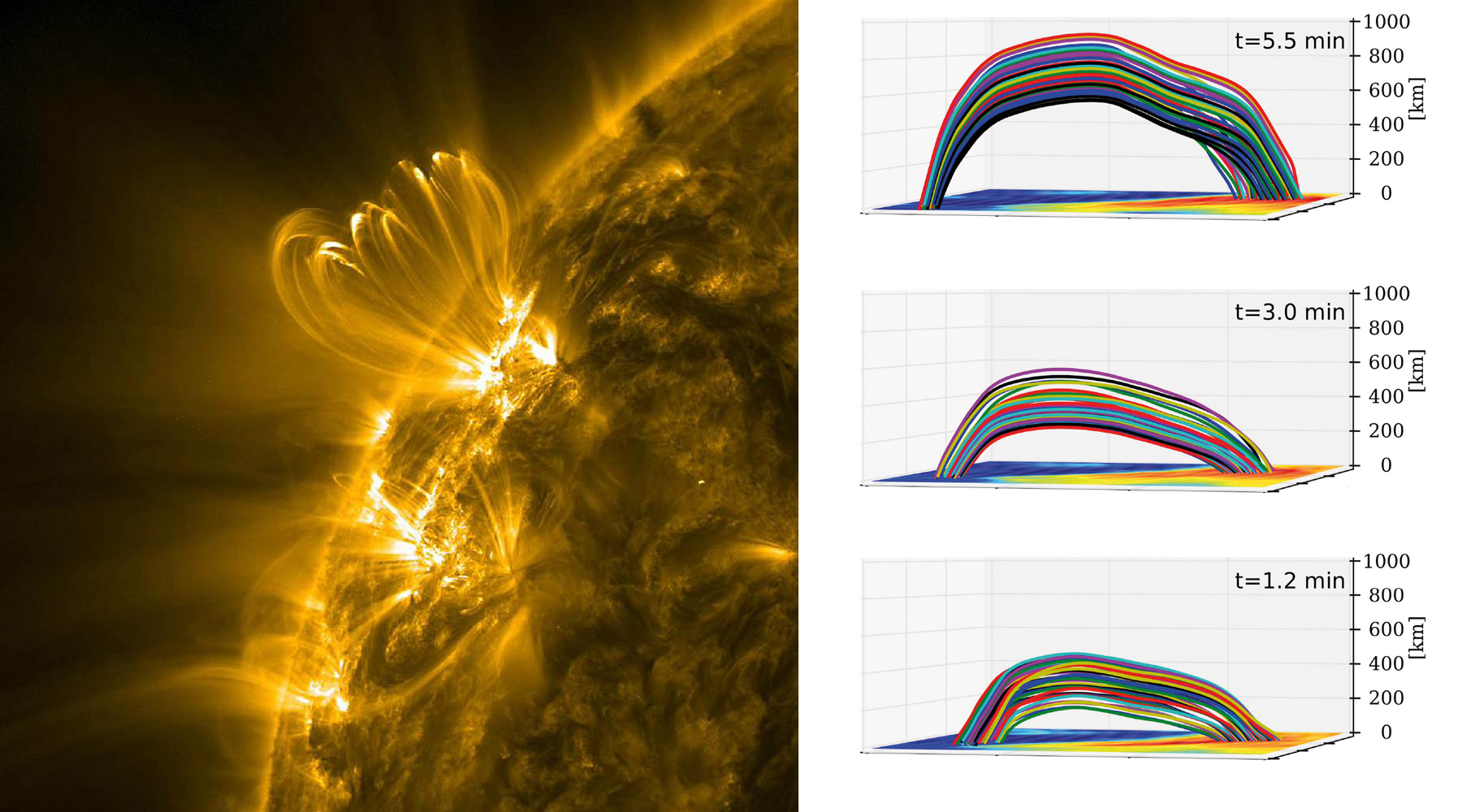IMaX, an instrument developed in Spain, analyses in detail the behavior of the Sun in full fledged activity
IMaX, a magnetograph developed for the Sunrise mission, observed the Sun from a stratospheric balloon above the Arctic. A precursor to SoPHI, which will equip the Solar Orbiter mission, IMaX has made key breakthroughs to understand the magnetic field which determines the behavior of the Sun
The Astrophysical Journal, based in the US, published a supplement of seventeen articles detailing the results of the Sunrise mission, a solar telescope measuring one meter in diameter, which in the course of several balloon flights around the Arctic studied the surface of the Sun with a record high resolution. On its first flight, Sunrise analyzed what is known as the "quiet Sun", that displayed unexpected activity; in its second flight, it yielded an excellent view of the active regions of the star.
Solar activity has been linked to short ice ages on earth or big scale blackouts such as the one that affected the entire province of Quebec (Canada) in 1989, due to a solar storm. It can also damage satellites in orbit and produce communications shutdowns. "We live in the extended atmosphere of a star, the Sun; it is essential to understand its behavior and try to predict it", says Jose Carlos del Toro Iniesta, researcher at the Institute of Astrophysics of Andalusia, coordinator of the Spanish contribution to project.

THE MAGNETIC FIELD: A KEY TO UNDERSTANDING SOLAR ACTIVITY
The Sun has an eleven year activity cycle which peaks when the number of spots and violent phenomena reaches a maximum, and then declines again. The origin of this activity lies in the magnetic field, generated inside the star, which constitutes a link with its outer layers as well as a means of storing, conveying and evacuating energy throughout its entire surface and atmosphere. This magnetic field ultimately determines what is known as the “space weather” of the entire solar system.
The internal structure and interactions or physical processes that govern the magnetic structures of the Sun are not yet known, however, and the IMaX instrument has turned out to be an extremely efficient instrument of inquiry.
ACTIVE REGIONS, BOMBS AND MAGNETIC TUBES
The magnetic field emerges on the surface of the Sun generally in the form of loops whose ends are of opposite polarity. That is thought to be the origin of what are known as active regions, and in its second flight IMaX was able to observe, with a very high resolution, the first steps in the emergence of two of those loops.
It was thus possible to describe in detail how the magnetic field interacts with the material on the surface of the Sun, dragging it along. The material, acting as ballast, finally collapses along the lines of the magnetic field, cascading down to the foot of the loop, which anchors the magnetic field to the photosphere – or visible surface – of the Sun. Finally, there is an increase in the glow and a decrease in the magnetic flow which researchers interpret as a magnetic reconnection or the reestablishment of the solar magnetic field.

These magnetic reconnections, which occur frequently in the Sun and in which magnetic energy is turned into heat, sometimes generate more intense phenomena. IMaX detected and analyzed what is known as an Ellermann bomb, a local, explosive increase in the temperature and glow related to young and still developing active regions.
Ellermann bombs are believed to be responses to magnetic reconnections. They produce jets of flames that seem to be rooted in the photosphere. However, the IMaX data and computer simulations show that these drastic changes in the structure of the solar magnetic field happen at higher altitudes, some two hundred kilometers above the photosphere.
Another notable result from IMaX has to do with the analysis of the tubes through which the magnetic field emerges. On occasion, these tubes can become circuits that convey solar plasma and can best be pictured as a couple of magnetic hubs with opposite polarities linked by a series of magnetic field lines.
"The direct observation of those lines had thus far been impossible, but the data yielded by IMaX allowed us not only to work out the magnetic topography of a three dimensional tube, but also to follow its evolution for three minutes”, says Jose Carlos del Toro Iniesta (IAA-CSIC). The reconstruction shows how the ascending arc rises as the ends of the loops spread apart, and the sequence ends when the structure rises beyond the photosphere, which seems to indicate that these structures could also be observed in the chromosphere – or cover – of the Sun.
"The SUNRISE mission and IMaX in particular have turned out to be powerful tools to study the Sun. We are now preparing the mission’s third flight, which will take place in 2021, with an IMaX+ on board and another instrument, the SCIP spectropolarimeter”, Jose Carlos del Toro (IAA-CSIC) says. "The former will still be entirely Spanish, the latter we are working on with our Japanese colleagues at the NAOJ".
R. Centeno et al. "A tale of two emergences: SUNRISE II observations of emergence sites in a solar active region". The Astrophysical Journal Supplement Series, 229:3 (March 2017) DOI: https://doi.org/10.3847/1538-4365/229/1/3
S. Danilovic et al. "Photospheric response to an Ellerman Bomb-like event - An analogy of SUNRISE/IMaX observations and MHD simulations". The Astrophysical Journal Supplement Series, 229:5 (March 2017) DOI: https://doi.org/10.3847/1538-4365/229/1/5
I. S. Requerey et al. "Spectropolarimetric evidence for a siphon flow along an emerging magnetic flux tube". The Astrophysical Journal Supplement Series, 229:15 (March 2017) DOI: https://doi.org/10.3847/1538-4365/229/1/15
Suplemento completo en The Astrophysical Journal.
Instituto de Astrofísica de Andalucía (IAA-CSIC)
Unidad de Divulgación y Comunicación
Silbia López de Lacalle - sll[arroba]iaa.es - 958230676
http://www.iaa.es
http://divulgacion.iaa.es

